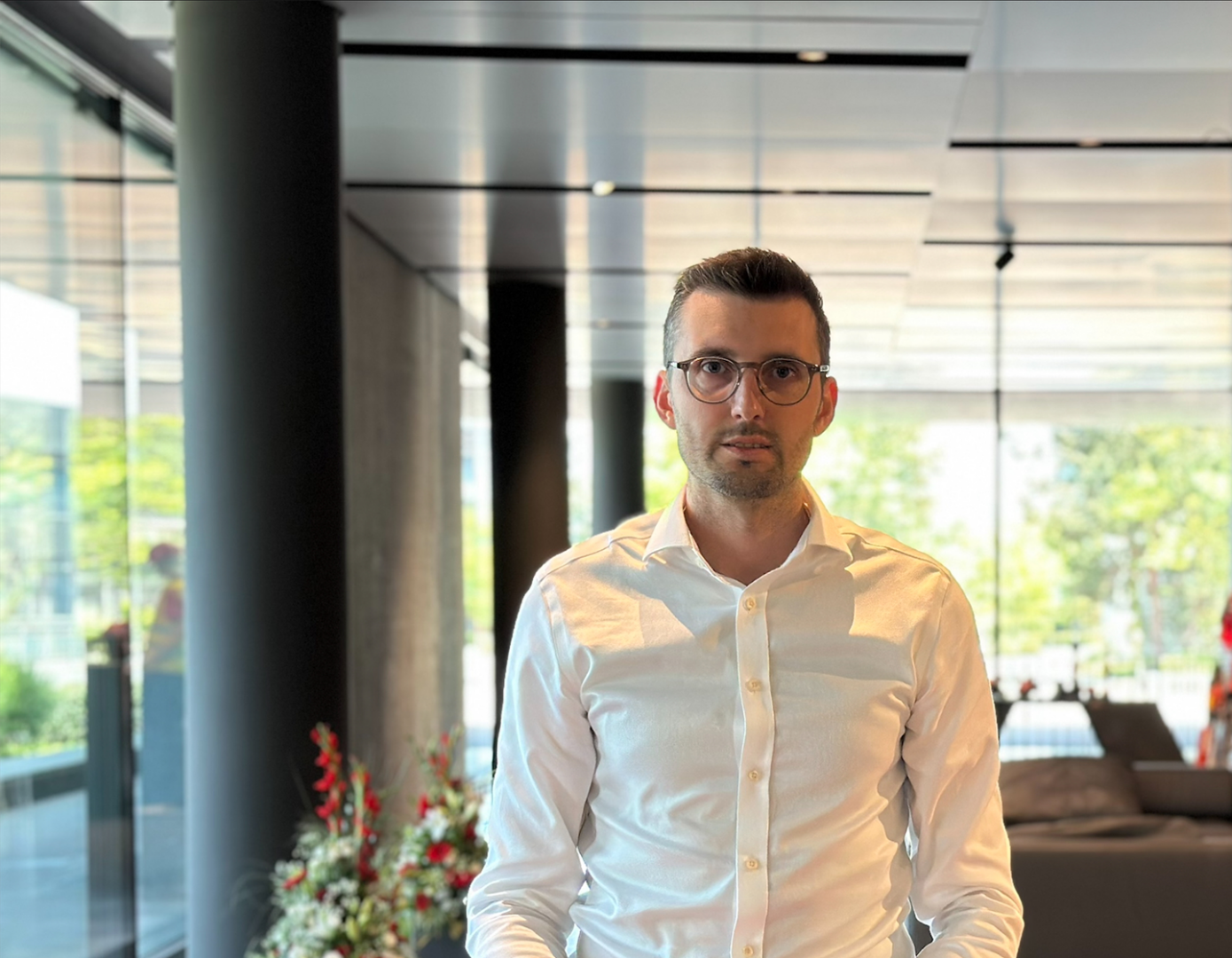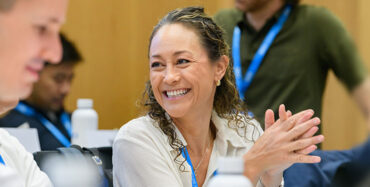
Working in research and development, Matteo Spampatti is used to tackling complex challenges and finding creative solutions. Over more than a decade at Hilti, his career has been defined by steady growth: from hands-on technical roles to leading innovation teams across continents. But as his responsibilities grew, so did his awareness of the importance of broadening his perspective.
“I grew up in one company, in one field,” he said. “I realized that to be ready for the next step, I needed something more – especially in terms of strategy, finance, and leadership. I believed that I was missing something.”
That realization led him to IMD’s Foundations for Business Leadership (FBL) program – not because he wanted to switch industries, but because he wanted to grow from the inside out. “It wasn’t about getting a new job,” he explained. “I didn’t want to change companies or environments. It was about strengthening the way I lead and becoming more future-ready.”
Leadership beyond the technical
A mechanical engineer by training, Spampatti’s career has taken him from his small hometown in Italy to China, Sweden, the US, and Switzerland, where he’s based with his family. He joined Hilti – a company that specializes in developing, manufacturing, and marketing products, software, and services for the professional construction industry – through an internship in marketing but quickly realized that his skills and mindset made him better suited to product development.
The turning point came during a three-year posting in the US, where he helped set up an innovation team tailored to the American market. “It was my first touchpoint with being an indirect leader,” he said. “I was helping to shape what to do, how the work got done, and how people worked together. That’s when I knew I wanted to lead.”
But as his career progressed, he began to feel the strain of operating within a single lens. “I’d been climbing, but mostly within a vertical track,” he said. “It became clear I needed more cross-functional exposure and a better grasp of business as a whole.”
Finding discomfort, and then growth
By the time he arrived at IMD, Spampatti was already leading a team in R&D, with some responsibilities in China. He was also navigating the complexities of strategy execution inside a large, legacy organization. But stepping into a room of peers from different industries and functions brought its own challenges.
“I think I was probably the only one from a legacy firm, coming from R&D. There were executive vice presidents, senior managers in financial firms, and CEOs from very different industries. The content and breadth of perspectives was completely new territory for me. It took some time for me to adjust, but that stretch was exactly what I needed.”
That discomfort didn’t last. What struck him most was how quickly participants opened up about their struggles. “After a couple of days, I went from feeling overwhelmed to ‘Okay, how can I activate this and get the best out of the situation?’
“Everyone was in a very similar and demanding environment – and out of their comfort zone,” he added. “That made it easier to let your guard down and to learn – especially from my brilliant FBL peers.”
Failing forward
One of the most formative moments for Spampatti came during a team simulation early in the program. “We completely failed as a team,” he recalled. “We all defaulted to old habits, and it just didn’t work.”
The exercise hit a nerve. “I can be impatient when things go wrong. I want to move forward, fix it, and push through. However, that’s not always helpful – especially when you’re working in new teams.”
What made the difference wasn’t the failure – it was the feedback. “Hearing those observations from people who didn’t know me, but who gave similar feedback to my colleagues, my manager, and my peers, helped me to pause, reflect, and adjust how I lead.”
It was, he says, his biggest behavioral breakthrough of the program. “It helped me to see myself more clearly – and accelerated a change in my leadership style.”
Building confidence in unfamiliar territory
Beyond the personal growth, FBL gave Spampatti tools to fill specific knowledge gaps, further refining his critical thinking. “For example, finance had always felt like a foreign language,” he said. “Now I feel comfortable speaking it and digesting the information.”
He was also surprised by the program’s focus on digital strategy. “I expected a broader view of strategic thinking, but the emphasis on digital was very relevant for where Hilti is heading. It helped connect the dots between traditional product development and where the industry is moving.”
But perhaps the biggest benefit was gaining a broader perspective. “In R&D, it’s easy to assume your challenges are specific and unique,” he said. “But when you meet people from completely different backgrounds facing similar situations, you begin asking: ‘How are others approaching this – and what can I apply in my own context?’”
Spampatti particularly valued the opportunity to collaborate with fellow participants, exploring new approaches and drawing on diverse expertise and perspectives from across industries and sectors.
Leading across time zones – and mindsets
Since completing the program, Spampatti has stepped into a senior management role, overseeing the full development lifecycle for a major segment of Hilti’s global business.
One of his top priorities is helping teams work better across borders. “I have people in China, Austria, the US, and Liechtenstein. They not only speak different languages, but they work and think differently. FBL helped me appreciate that more deeply and equipped me to make the most out of it.”
Looking back, Spampatti sees FBL as a key enabler, not just for career growth but for navigating complexity more effectively. “FBL wasn’t the end point; it was a foundation,” he said. “It sharpened my critical thinking, helped me tune into what matters, and gave me practical tools to manage complexity in a more structured way.”


